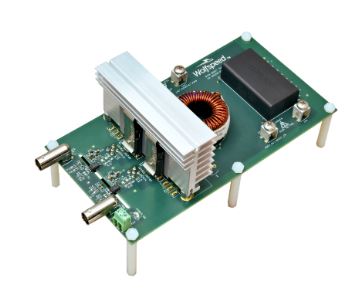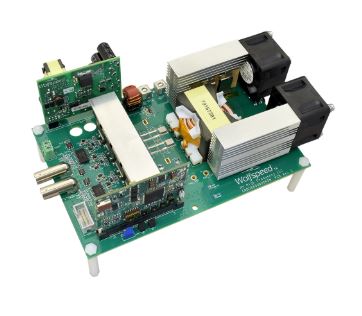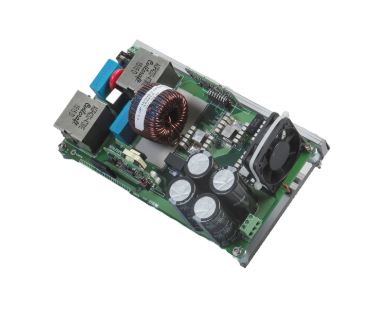When looking for the right vehicle, sustainability is likely one factor that comes to mind.
Now more than ever before, the demand for energy-efficient vehicles is growing, posing new challenges and opportunities for engineers looking to design electric and hybrid electric vehicles. With new advances in Silicon Carbide (SiC) technology, it’s now possible to develop reliable, rugged inverters to power electric drivetrain without sacrificing efficiency or sustainability.
The Demand for EV/HEV Power Components
The demand for electric vehicles (EVs) and hybrid electrical vehicles (HEVs) is rapidly growing as more people take an interest in the environmental impact of their personal transportation. As EV/HEV designs continue to improve, it is crucial to have reliable and sustainable power components for several systems in a typical EV/HEV, including the drivetrain.
Challenges Related to Electric Drivetrains
The design and development of electric drivetrains for EVs and HEVs include several significant challenges: the components must be durable and extremely reliable, while still supporting sustainability. The rugged conditions they face typically involve extremely high temperatures, high voltages, and high humidity.
The inverter, tasked with converting DC power from a hybrid battery to AC power for the drivetrain, is just one key component in EV and HEV vehicles. For an EV/HEV to be truly sustainable, the power conversion process must be as efficient as possible.
SiC-based MOSFETs for Inverters
Traditional inverters are designed with silicon IGBTs, which are different than MOSFETs. We could say "EV inverters require power semiconductors with high voltage and current capabilities. Traditionally, these systems have been designed with silicon IGBTs, however Silicon carbide MOSFETs are outpacing them when it comes to the critical design requirements of modern electric drivetrains.
Silicon carbide is a wide bandgap technology, which means its inherent material properties enable it to safely operate at high voltages and extreme temperatures. SiC MOSFETs, therefore, are ideally suited to meet the system requirements of efficiency and robustness that modern drivetrain inverters demand. These advantages over traditional silicon technology enable extended driving range and ultimately a more sustainable EV.
650V SiC MOSFET Family
Wolfspeed's new 650V SiC MOSFET family enables power solutions that are highly efficient, power-dense, and run at very cool temperatures. When a power component runs cool, it supports the overall system efficiency and reduces component count since the additional cooling systems needed are either smaller or eliminated completely. Each of these features supports sustainability and makes an excellent case for their use in power inverters.
Wolfspeed and SiC MOSFETs
The continued evolution of the SiC MOSFET has made it possible for engineers to design powertrain inverters rugged enough to handle high-temperatures and extreme humidity, while providing higher voltage ranges and faster switching speeds compared to their Si counterparts. Wolfspeed has thirty years of experience in developing power solutions, including Silicon Carbide components that contribute to the design goals of EV/HEV and renewable energy. In fact, Wolfspeed is already on its third generation of SiC MOSFETs. When looking for reliable, sustainable power components and solutions for EV/HEV drivetrains, look to the experts at Wolfspeed for help.
Product and Reference Design Solutions
| Product | Blocking Voltage (V) | RDS(ON) at 25℃(mΩ) | Current Rating at 25℃ (A) | Package |
| C3M0015065D | 650 V | 15 mΩ | 120 A | TO-247-3 |
| C3M0015065K | 650 V | 15 mΩ | 120 A | TO-247-4 |
| C3M0060065J | 650 V | 60 mΩ | 36 A | TO-263-7 |
| C3M0060065K | 650 V | 60 mΩ | 37 A | TO-247-4 |
| C3M0060065D | 650 V | 60 mΩ | 37 A | TO-247-3 |
Reference Designs
Explore Wolfspeed’s 650V SiC MOSFETs, companion parts, and reference designs to learn more about how SiC MOSFET technology from Wolfspeed can help you build better products that are up for the demands of today’s modern devices.
CRD-06600FF065N — 6.6-kW High-Power-Density Bi-Directional AC/DC + DC/DC Battery Charger Reference Design
 |
|
KIT-CRD-3DD065P – DC/DC Buck-Boost Converter Evaluation Kit
 |
|
CRD-06600DD065N – 6.6 kW High Frequency DC-DC Converter
 |
|
CRD-02AD065N – 2.2 kW High Efficiency (80+ Titanium) Bridgeless Totem-Pole PFC with SiC MOSFET
 |
|

